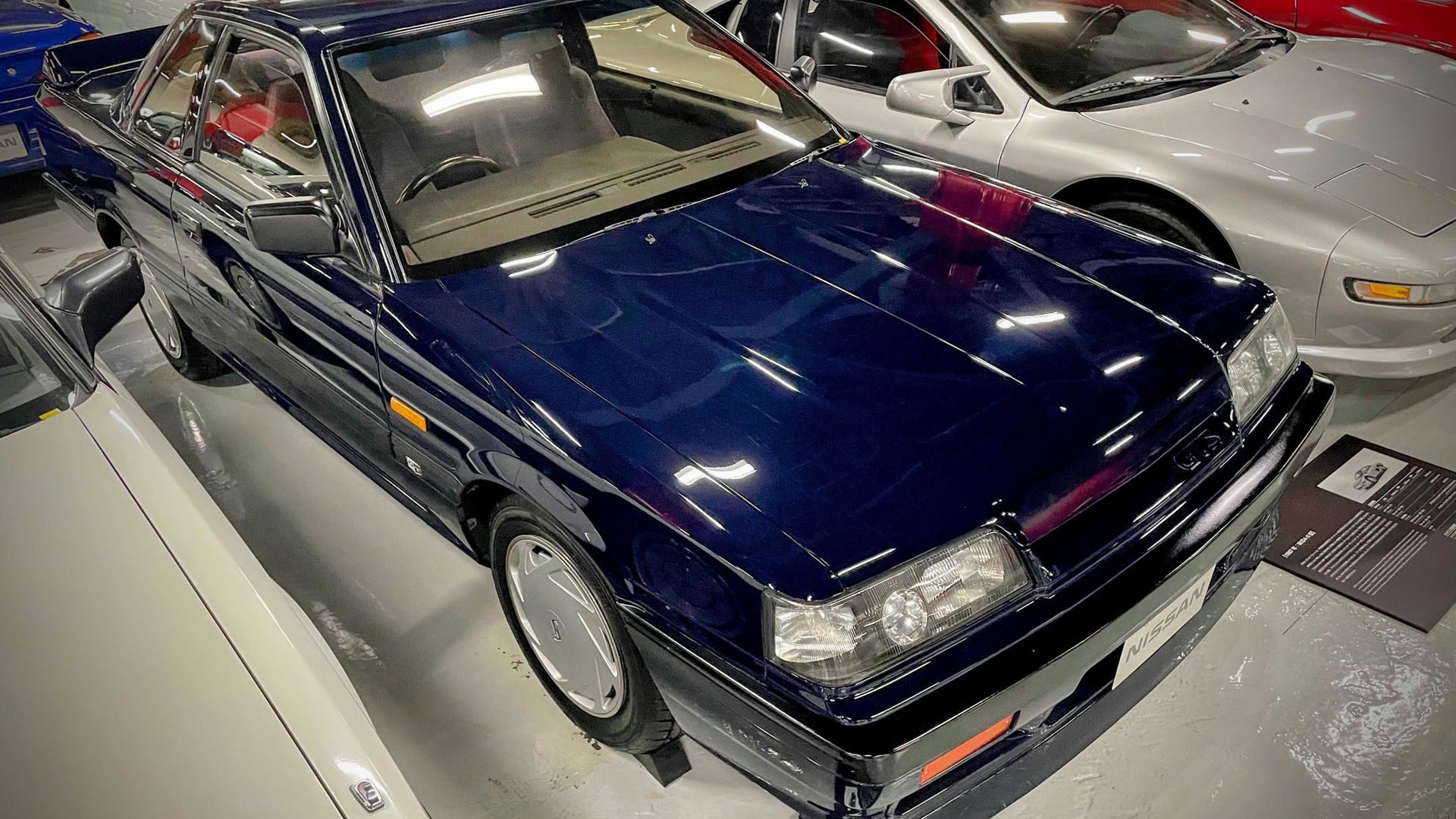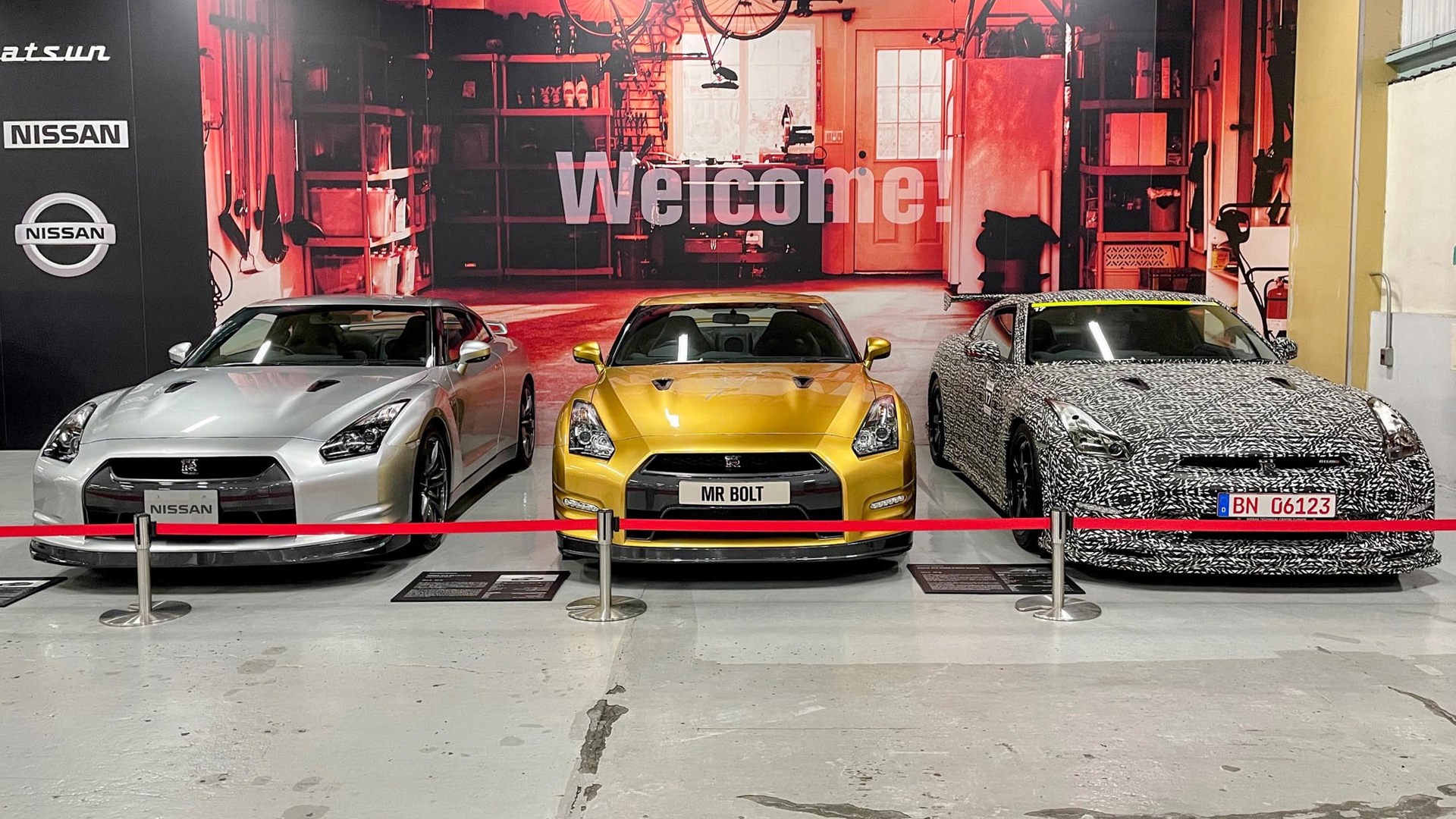With photos by Hiroaki Kamohara, Squint LLC, courtesy Nissan.
Zama, Japan – After taking in the entirety of Nissan’s long history, from 1930s trucks to mid-century sedans to modern experimental electric vehicles (EVs) at the company’s Heritage Collection in Zama, Japan, one car stands out.
The Nissan GT-R shouldn’t exist. It makes no sense in 2023: a supercar-chasing $170,000 monster from the brand that brought the world the $9,999 Micra and the snooze-fest 2010 Leaf. Not only does the GT-R continue to exist, but it’s become something of a modern classic, soldiering on so long that the current model has gone from cool to lame and back around to cool again.
This is a tour through the Nissan GT-R’s history, as told by Ryuji Nakayama, who works at Nissan’s global brand experience department and manages the heritage collection in Japan. Strangely, it starts and ends with an EV.
TAMA electric car (1947)

Nakayama traces the GT-R’s history back to the years after the Second World War when Japan was prohibited from assembling aircraft. It all started – deep breath – out of the Tachikawa Aircraft Company, which became Tokyo Electro Automobile Co., which became Prince Motors Ltd., which ultimately merged with Nissan Motor Co. in 1966. Tokyo Electro made the compact TAMA you see here in 1947 because gasoline supply was strictly controlled by the U.S. military back then. Cars like this helped get the country moving after the war and set the stage for Nissan’s success.
Prince Skyline (1957)

The first Skyline was a luxury sedan, Nakayama explains. It was resplendent in American-inspired chrome details, but it was fast compared to its peers. Powered by a 59-horsepower 1.5-litre four-cylinder engine, it was good for a top speed of 125 km/h, which, Nissan claims, made it the fastest Japanese domestic car at the time.
Prince Skyline 2000GT (1965)

Photo by Hiroaki Kamohara, Squint LLC., courtesy of Nissan
Meet Nakayama’s personal favourite car in the entire 500+ vehicle collection. This second-generation Skyline shifted directions, he explains. Since Prince’s new Gloria sedan took over as the luxury four-door in the lineup, it allowed the Skyline to become a sportier machine, setting the stage for the first GT-R.
Nissan Skyline 2000GT-R (1969) – Part 1

This boxy red sedan was the first GT-R, a special high-performance model built to give Nissan a more competitive platform to enter touring car races. “From an engineering standpoint, the GT-R was a completely different approach to earlier Skylines,” Nakayama says. “Previous models were an extension of the production model with better carburetors or something. But the GT-R, this was racing technology from a prototype sports car, the Prince R380. It was a completely different approach: four-valves, double-overhead cams, four-wheel independent suspension,” Nakayama continues.
Nissan Skyline 2000GT-R (1969) – Part 2

Photo by Hiroaki Kamohara, Squint LLC., courtesy of Nissan
“It was born to win races. It beat everyone in the touring car races. This is the DNA of the GT-R,” explains Nakayama. The original GT-R has got to be one of the all-time great sleepers. I love it.
Nissan Skyline Hardtop 2000GT-R (1972)

“It’s kind of an icon,” Nakayama says. In 1970, the four-door GT-R was launched as a two-door coupe, codenamed KPCG10. Lighter with a 70-millimetre shorter wheelbase, non-reclining seats, and a minimal interior, KPGC10-based race cars notched up 52 wins in touring car races in 1972 alone, according to Nissan.
Nissan Skyline 2000 GTS-R (1987)

The successive R30 and R31-generation Skylines didn’t get the full GT-R treatment, but were nevertheless still cool – in my professional opinion. This boxy and beautiful GTS-R, which was built as a homologation special for touring car races, gets a special shoutout from me. It was a high-tech machine for its time, with a 207-horsepower, straight-six turbocharged engine.
Nissan Skyline GT-R (1989)

After a 17-year absence from Nissan’s lineup, the GT-R eventually re-emerged after the ’70s oil crisis years, just as the “performance car wars” were heating up in the late ’80s, Nakayama explains. The highly coveted R32-generation GT-R was built specifically to win Group A touring car races, beating European rivals that had previously proved too strong for Nissan. In doing so, it won back Nissan’s sporting image, my guide explains. Thanks in large part to the electronically-controlled torque-splitting so-called “ATTESA E-TS” all-wheel drive system, excellent suspension, and a specially-developed 2.6-litre twin-turbo straight-six engine, this car was a monster befitting its “Godzilla” nickname.
Nissan Skyline GT-R “Calsonic” (1990)

Here’s a completely gratuitous picture of the “Calsonic Team” Nissan GT-R that won the 1990 Group A Japanese Touring Car (JTC) championship. These work machines were tuned to around 550 horsepower. This car was unbeatable for four years, a streak that lasted until 1993 when the JTC series ditched Group A regulations entirely.
Nissan Skyline GT-R V-Spec (1997)

The GT-R got bigger and heavier with the R33 generation, which went on sale in 1995. The company wanted to reposition the car as more of a grand tourer. Still, it whipped around Germany’s benchmark Nordschleife circuit in under eight minutes, 21 seconds faster than the R32. It often gets overlooked, perhaps unfairly, because of its softer style and because of what came next.
Nissan Skyline GT-R V-spec II (2000)

From a post-war EV, to a humble family sedan, to a Group A winning racer, to this: an absolute legend among drivers the world over. If you saw the original Fast and Furious film or played Gran Turismo, you know this car: the R34-generation GT-R, launched in 1998. It’s probably the most beloved and iconic of the bunch. “It’s so famous,” laughs Nakayama.
Nissan Skyline GT-R M-spec Nür (2002)

“This car is very special,” Nakayama says. “It was a limited edition of 1,000 units and it sold out in one day,” he adds, which shows how coveted the GT-R had become. Thanks to an informal agreement among Japanese car companies that had been in place since 1989, this special R34 model made the same 276 horsepower as the R33 and R32 – on paper, anyway. It’s an open secret that these cars were much more powerful than that, but officially, so as not to ruffle any regulatory feathers or start a horsepower war, figures were capped at 276. That agreement ended in 2004, which paved the way for the R35.
Nissan GT-R (2007)

It took six years of teasers and concept cars, but finally, the next-gen GT-R was launched to much fanfare in 2007. It had a whopping 473 horsepower from a twin-turbo V6, with a gearbox mounted behind the passengers, and a highly computerized chassis. To drive the R35-generation GT-R was, initially, an odd experience. It could feel aloof at first. But, pushed harder, it revealed a breadth of talent few, if any, rivals possessed. It was comfortable (especially later year models) and frighteningly quick, boisterous and entertaining when you wanted it to be. It outdid the Porsche 911 Turbo for a fraction of the price ($81,000 for the 2009 model). Unfortunately, Nissan has kept increasing the GT-R’s price to the point where today, it’s as expensive as a Porsche 911.
Nissan Hyper Force concept (2023)

Taking a page out of the 1947 TAMA electric car – the GT-R’s great-great-great-grandmother in Nakayama’s telling – the Hyper Force concept unveiled this year is a very early look at the GT-R’s electric future. To get the sort of power-to-weight ratio a supercar-baiting sports car like this deserves, Nissan envisions lightweight, energy-dense solid-state batteries, and 1,341 horsepower. Given that Nissan won’t put solid-state batteries into production cars until 2028, we’ll be lucky if the electric GT-R arrives before the end of the decade – if it arrives. But, come on Nissan, please don’t end the GT-R story here.
A Note About Visiting Nissan’s Heritage Collection Museum in Zama

Photo by Hiroaki Kamohara, Squint LLC., courtesy of Nissan
The Heritage Collection in Zama, Japan, is open to tourists who book an appointment, Nakayama confirms, but warned the booking website is unfortunately only in Japanese. For any diehard GT-R fan though, it’s a must-do pilgrimage.





















